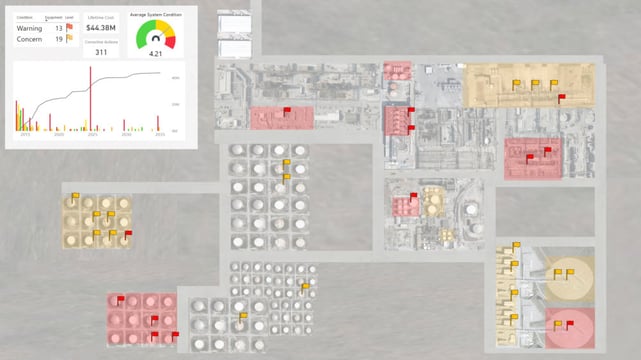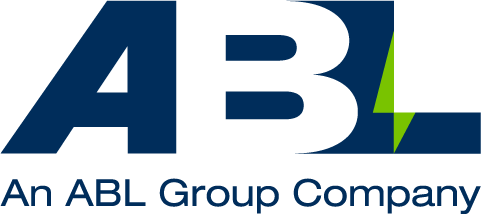Overcoming common challenges associated with aging plants
An aging plant is one that has typically been operating over several decades and is likely to have gone through significant changes, ranging from modifications to expansions and design changes. As the asset gets older, there are several challenges that will inevitably arise, such as over or under maintained equipment, difficulties purchasing spare parts or changes in operating conditions that can lead to corrosion, erosion, mechanical damage, and other late life degraded failures.
In this blog post we discuss the top common challenges associated with aging assets and provide helpful tips on how to overcome them.
Materials and spares management
The challenge:
As equipment gets older, it becomes more and more challenging to locate and purchase spare parts. With technology continuously advancing, the balance of spares holding becomes difficult as certified vendors may stop producing certain equipment, making the obsolete and hard to find for aging assets.
An approach that companies could take is to replace the equipment, but this is a very complex and expensive tactic for tackling spares issues if late in the lifecycle of the asset. For example, a company may struggle to find spare parts for a 50-year-old pump and decide to replace the whole pump with a new, modern one. Despite the fact that the new pump may, on its own, cost $100,000, many aspects must be taken into account when making the decision to replace parts, in this case, that could be the instrument control systems, the electrical distribution and the design, meaning the overall project may end up costing millions of dollars. You have to make sure that the value case for the modification is absolutely clear and achievable to stakeholders, the dichotomy is that this is difficult to do in late life when the replacement is most likely required as equipment is beyond safe and useful life estimates.
Solution:
The issue with spares is very much linked to the management of obsolescence. As equipment becomes obsolete, there are 3 main strategies to consider following:
- Purchase multiple spares from the marketplace before they become obsolete or are scrapped and store them. With this option, it is important to note that spares do go out of certification after a length of time, so it is important to ensure they are preserved properly under the vendor instructions.
- Look for interchangeable equipment component that may be available. They must be a like for like change to work in the environment that is needed and go through the Management of Change (MoC) process.
- In some cases, reverse engineer components in precision workshops.
Inaccurate or lack of optimised maintenance strategies
The challenge:
Equipment is over or under maintained because assets don’t get benchmarked or optimised to reflect the changes that have occurred, and the data recorded is unstructured or missing. For example, when trying to sustain 100,000 barrels of oil production, you want everything to work efficiently, so you would drive your maintenance and write maintenance strategies to reflect that. As the asset declines and ages, you develop a different approach in terms of how to conduct maintenance, and many companies don’t update their strategies to reflect that.
Solution:
To overcome this challenge, it is important to invest into the continuous review the data produced by the asset and periodically update the maintenance strategy throughout the lifecycle of the asset.
Obsolescence
The challenge:
Obsolescence occurs when equipment or software is no longer supported with spares or servicing capability from its vendor. If the mean time between failures is decreasing, at the back end of the bathtub curve, and the ability to find spare parts or to maintain the equipment is decreasing because of obsolescence, then you have to either change the equipment out or decommission it and change the design in terms of operations.
Solution:
The development of “heat maps” is an effective method for managing this issue and one that ABL has developed specifically for helping clients identify equipment moving towards obsolescence.
When a piece of equipment moves from green to amber on the heat maps, this highlights that an investment strategy is required. As the equipment then moves from amber to red, the strategy should, by this point, be approved and ready to implement. The process of equipment or software moving from amber to red indicates which strategies need to be reviewed and what solutions have to be implemented, e.g., will the equipment be stripped out or will the spares holding change?
Below is an example of this type of heat map.

Inspection anomaly management
The challenge:
When an inspection is conducted and problems that may affect integrity such as erosion or pipe wall failures are found, these are referred to as anomalies. Assets that were designed to last 25 years have now been in use for 40 years or more, meaning the pipes get thinner and sometimes fail. The older the platform is, the more anomalies occur, so it is important to find a way to manage the volume of anomalies.
Solution:
To manage anomalies effectively, it is critical to ensure the areas of highest risk are prioritised and that the applied strategies are producing positive results. Revisit where the initial baseline survey is and make sure you are limiting the amount of pipe containment failures at all times.
Small bore piping vibration
The challenge:
As assets age, the profile of fluids that go through them change and the way different parts of the plant operate can also change. For example, with a relatively new platform you could extract up to 100,000 barrels of oil, but after 30 years you may only get around 10,000 of oil, but 250,000 barrels of water. Some pumps and compressors may be working at much lower loads (with higher recycle rates) and some may be working much harder than they ever needed to. With the density changes between oil and water, and the changes in use and operating profile of the machinery, vibration problems can arise in parts of the plant that were previously low risk.
Solution:
To mitigate this, a clear strategy for managing the vibration risks must be in place. This strategy will allow the changing risk profile to be captured and will allow potential high risk small bore and mainline problems to be identified before failure occurs. This can be done by taking the time to engage with the right people to conduct small bore pipe work surveys when required and at intervals that are appropriate to the overall asset integrity management plan.
Technicians competency
The challenge:
In many cases, operations and maintenance technicians on site have been there since the asset was produced, which comes with its own set of challenges. As these people retire, they take with them their knowledge of the asset which can sometimes leave gaps in the understanding of the operations and history of the asset.
Solution:
The best solution for this is to make sure there is really efficient knowledge transfers for new technicians that are being recruited into the industry, and that they are learning from experienced technicians. Capturing this knowledge in high quality written procedures and videos before this happens is highly effective for getting the next generation of technicians up to speed.
Poor management of change
The challenge:
A significant challenge with aging assets is that there has been poor management of change. This includes engineering projects, minor modifications, procedures, processes, standing instructions, asset registers and drawings. The management of change could be equipment upgrades, modifications to systems and decommissioned or mothballed equipment, all contributing to the asset register being out of date.
Solution:
To overcome this challenge, it is essential to ensure there is discipline as well as a really clear and simple methodology for managing change. Effio is a strong system to use to manage change within the CMMS system, for both integrity and maintenance management.
How ABL can help with aging plants
ABL’s asset management experts specialise in designing, implementing, and optimising our client’s asset management strategies across the entire life cycle of their plants.
The CMMS, ERP or EAM system provides an effective mechanism for managing maintenance, integrity and materials for the plant and it is key that the strategies and implementation tactics within the system align with the requirements of the operational phase that the plant is in.
From initial design through to decommissioning and disposal, ABL helps plant operators spend money in the right place to mitigate risk and assure profitability.
